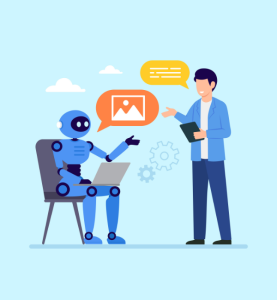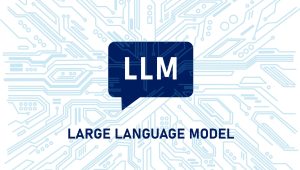LLM-powered data extraction automates business processes by using AI to extract, structure, and interpret unstructured data from emails, PDFs, and other documents. This improves efficiency, reduces manual effort, and enhances decision-making. As AI evolves, businesses adopting LLMs gain a competitive edge. Introduction In today’s fast-paced business environment, organisations are faced with the challenge of handling vast amounts of unstructured data, which is present in various formats such as emails, PDFs, and other document types. Manual extraction and processing of this information can be both time-consuming and prone to errors, resulting in significant costs. Large Language Models (LLMs) are transforming the way businesses handle data extraction by offering automated solutions for the retrieval, structuring, and interpretation of information. With the development of AI-driven natural language processing (NLP) and computer vision, LLMs are being utilised to streamline workflows, reduce human effort, and enhance operational efficiency. From processing customer orders to responding to queries, AI-powered automation is transforming industries that rely on manual data entry and analysis. What is LLM Data Extraction? LLM data extraction uses AI models to process unstructured or semi-structured data from emails, documents and other digital formats. Rather than relying on predefined templates or rule-based automation, LLMs use deep learning to understand context, extract relevant details and structure the information in a usable format. This technology is particularly useful for businesses dealing with high volumes of incoming data in various formats, including: By automating data extraction, LLMs help businesses improve speed, accuracy, and scalability while reducing dependency on manual processing. How LLMs Extract and Process Data LLM-powered data extraction involves multiple steps, each aimed at replicating the cognitive functions of human agents. 1. Parsing and Understanding Documents: LLMs can analyse text from various sources, including emails, PDFs, and scanned documents. This step often includes: 2. Optical Character Recognition (OCR) for Scanned Documents: Many business documents arrive as scanned images rather than machine-readable text. AI-powered Optical Character Recognition (OCR) extracts text from these files, allowing LLMs to process them further. Advanced OCR techniques can even interpret handwritten text and low-quality scans. 3. Contextual Understanding and Data Structuring: Unlike traditional automation tools that rely on strict formatting, LLMs use contextual analysis to interpret vague or incomplete data. This enables them to: 4. Handling Complex or Ambiguous Requests: A major challenge in automated data extraction is dealing with incomplete or unclear information. LLMs can apply reasoning techniques such as: If necessary, AI agents can flag ambiguous cases for human review or send automated clarification requests to clients. Key Use Cases of LLM Data Extraction 1. Automated Order Processing Businesses that receive orders through emails, PDFs, or online forms can use LLM-powered agents to extract order details, validate product specifications, and input structured data into their ERP or CRM systems. This eliminates the need for manual order entry and speeds up fulfilment times. 2. Customer Support Automation LLMs can analyse incoming customer emails, extract relevant information, and generate automated responses for common queries, such as: By reducing the volume of routine inquiries handled by human agents, businesses can focus on higher-value customer interactions. 3. Invoice and Payment Processing AI-driven extraction can streamline financial workflows by: This reduces manual effort in accounts payable and receivable departments while improving accuracy. 4. Legal and Compliance Document Processing LLMs assist in reviewing contracts, agreements, and regulatory documents by extracting key clauses, terms, and obligations. This allows legal teams to quickly analyse large volumes of documents without manually sifting through text. 5. HR and Recruitment Automation HR teams can use AI-powered data extraction to: This speeds up the hiring process while ensuring consistency in candidate evaluation. Advantages of Using LLMs for Data Extraction Future of LLM Data Extraction and AI Automation As AI technology continues to advance, the scope of LLM-powered automation will expand. Future developments may include: Businesses that adopt LLM-powered automation early will gain a competitive advantage in efficiency, cost reduction, and customer engagement. Conclusion LLM-powered data extraction is transforming business operations by automating complex workflows, improving accuracy, and enhancing customer service. Whether it’s processing orders, managing financial documents, or handling customer inquiries, AI-driven solutions are helping businesses scale and optimize their operations. By leveraging LLMs alongside OCR, image recognition, and business logic, organizations can significantly reduce manual effort while ensuring data integrity and compliance. The future of business automation is AI-driven, and companies that embrace this transformation will lead the way in efficiency and innovation. FAQs 1. How do LLMs handle different document formats? LLMs use a combination of natural language processing, OCR, and business logic to extract and structure data from emails, PDFs, spreadsheets, and images. 2. Can LLMs process handwritten text? Yes, advanced OCR technology enables LLMs to recognize and extract handwritten text from scanned documents. 3. What industries benefit the most from LLM-powered data extraction? Industries such as e-commerce, finance, healthcare, legal, and logistics can significantly benefit from automated data extraction and processing. 4. Are LLMs completely replacing human agents? No, while LLMs can handle repetitive tasks, human oversight is still needed for complex cases and decision-making. AI works best when augmenting human expertise. 5. How can businesses implement LLM-powered data extraction? Companies can integrate LLM-based solutions into their ERP, CRM, or customer support systems through APIs, cloud services, or custom AI models tailored to their workflows.




